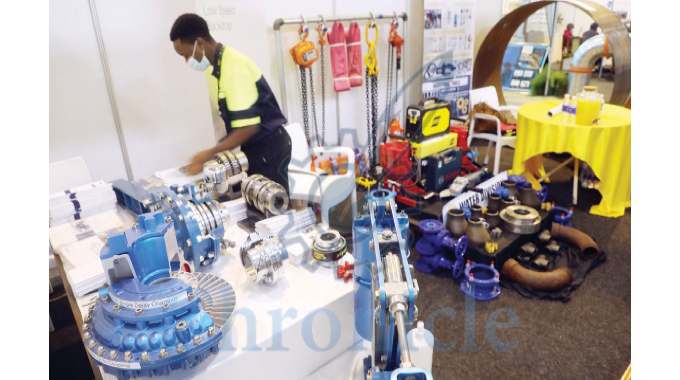Local suppliers angle for US$2,4 billion mining order book

Nqobile Bhebhe, Senior Business Reporter
LOCAL registered mining suppliers are eager to exploit the massive US$2,4 billion order book from the mining sector, which is being enjoyed by foreign players and distribution agents.
This comes at a time the country’s mining sector is undergoing a radical transformation, which has seen the resuscitation, re-opening and expansion of several mining projects countrywide.
The mining industry aims to achieve the US$12 billion milestone by 2023 with vast potential for positive impact on uplifting associated industries along the value chain and continued growth requires robust linkages between mining companies and suppliers of various goods.
However, industry players have expressed concern that there is a disconnect in the supply value chain as most local supplies of various components prefer to be agents of foreign manufacturers.
The ideal situation, according to industry players, is for local suppliers to transform themselves into major manufacturers of required consumables.
Speaking to Business Chronicle on the sidelines of the mining industry suppliers’ forum organised by the Chamber of Mines of Zimbabwe on Wednesday, Joint Suppliers and Producers committee chairman, Mr Alec Mhembere, said the committee is keen to work with serious suppliers that want to invest in the supply chain.

Chamber of Mines of Zimbabwe
“We have a huge order book of US$2,4 billion in terms of supply chains in the mining industry and we are noticing that several products that are being consumed are from outside the country,” he said.
“We are urging local suppliers to participate and supply products and not to be distributors.
“As a mining industry, we stand firm behind them and the Government programme of empowering local manufacturers and suppliers.”
The mining industry procures a diverse range of inputs including protective clothing, consumables, explosives, transport services, drilling, and construction materials, most of which could be produced at home.
The forum held under the theme: “Addressing challenges facing suppliers of the mining Industry”, was aimed at strengthening business linkages and networks between the mining sector and its related supplier sectors.
Mr Mhembere, who is also Zimplats chief executive, told the forum that the value of annual mining output has almost quadrupled from around $1,5 billion in 2011 to $6 billion in 2021, while the share of procurement to total mining revenue has grown markedly from US$600 million in 2011 to US$2,4 billion in 2021.
“The component of money spent through locally registered suppliers and agents has also grown phenomenally from as low as 30 percent in 2011 to as high as 70 percent in 2021,” he said.
“Thus, mining sector serves as an important market for other sectors. Despite the growth in the share of the locally registered suppliers and agents, it’s important to note that the share of locally manufactured inputs has remained low,” said Mr Mhembere.
“According to the Chamber of Mines 2021 State of the Mining Industry Report, the mining industry is receiving inputs amounting to less than 15 percent from the local manufacturing sector of which four percent is from electric power equipment, 3,2 percent from iron and steel products, three percent from distribution, 2,3 percent from non-electrical machinery and equipment, 1,3 percent plastics and rubber, one percent from fibres, matches, ink, and other chemicals,” he told the forum.
Mr Mhembere said some of the challenges that are inhibiting local supply include lack of access to sustainable financing in terms of investment and working capital, gradually declining skills base as some of the critical skills migrate.
“This is where we have a challenge, where we say we want the mining sector to grow but we see the supply chain in the mining sector dominated by foreign players,” he said.
“However, we are excited that several foreign players are engaging local participants as agents and it is our fervent hope that from the engagement local suppliers will capacitate and grow and become mainstream suppliers to the mining sector.”
In his presentation, Chamber of Mines chief executive officer, Dr Isaac Kwesu, noted that the growth in the mining output provides market opportunities for the suppliers and service providers in the industry

Dr Isaac Kwesu
“Demonstrating this, our Survey revealed that around 40 percent (US$2,6 billion) of the US$6,5 billion generated by the mining industry would be spent on suppliers. Thus our industry remains an important market for output from other sectors,” he said.
Dr Kwesu said with the importance of suppliers in the mining value chain, the Chamber of Mines continues to take the lead in promoting the use of local factors of production.
He urged suppliers to remain competitive and to improve on the quality of products, the cost and delivery lead times, to tap into the opportunities availed by mining companies.
Buy Zimbabwe chief executive officer, Mr Munyaradzi Hwengwere, said local suppliers should take advantage of the growing mining value chain by procuring locally.
“We need to rebuild our local manufacturing capacity. About 15 percent of goods that go into the mining sector are manufactured locally, this means we have more than 80 percent of imported products. We need to reduce that by 35 percent,” he said.
“Of the US$2,4 billion, which is going to the mining sector supply, less than US$200 million is generated by local manufacturers and the rest is building capacity in other countries.”
Buy Zimbabwe Campaign has been at the forefront of advocating for the manufacturing and consumption of local goods to stimulate economic growth. — @nqobilebhebhe








Comments